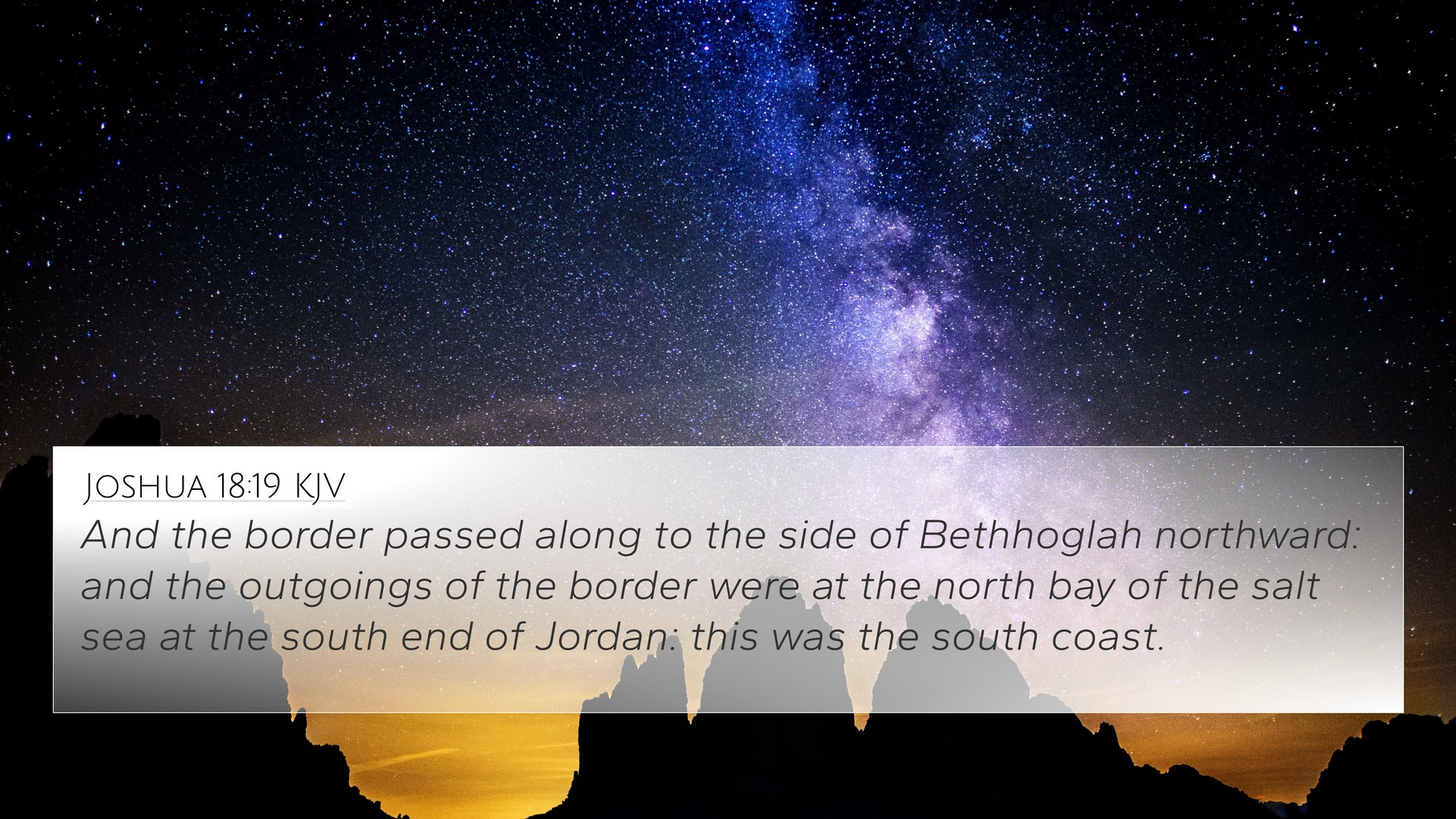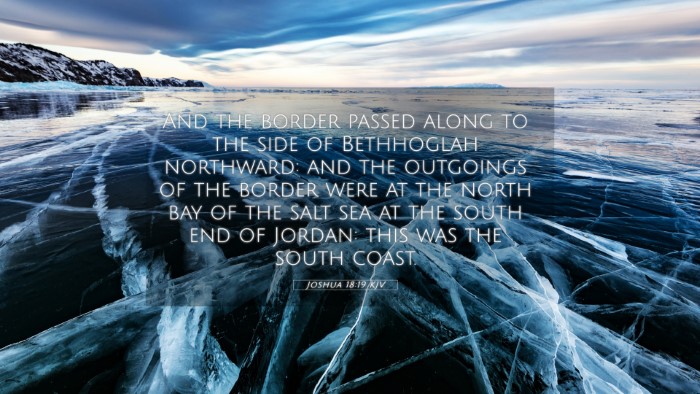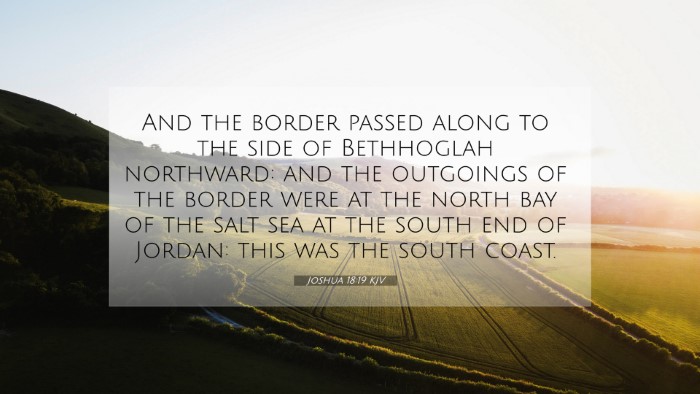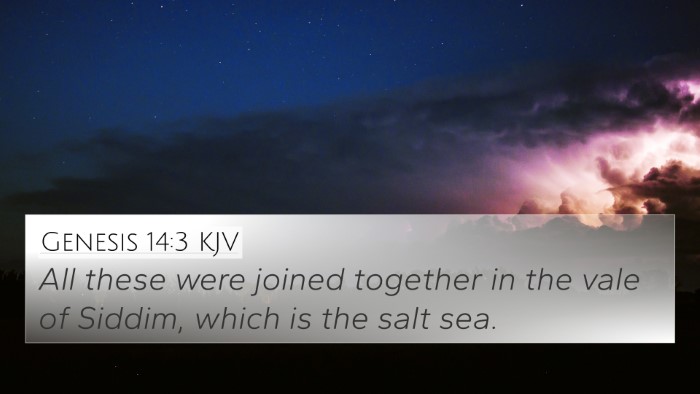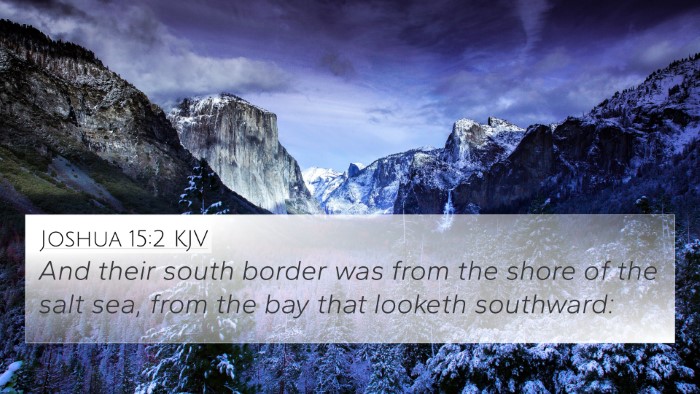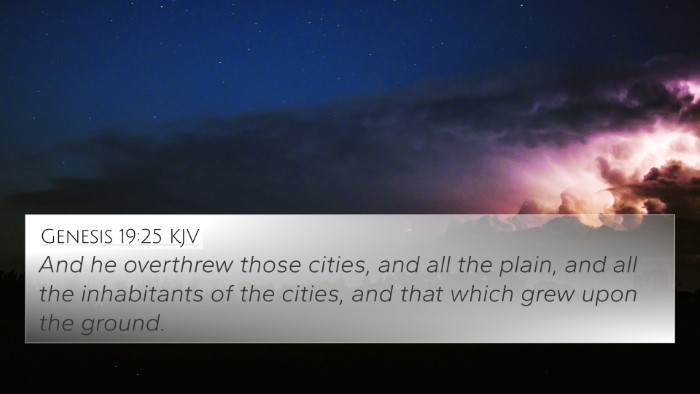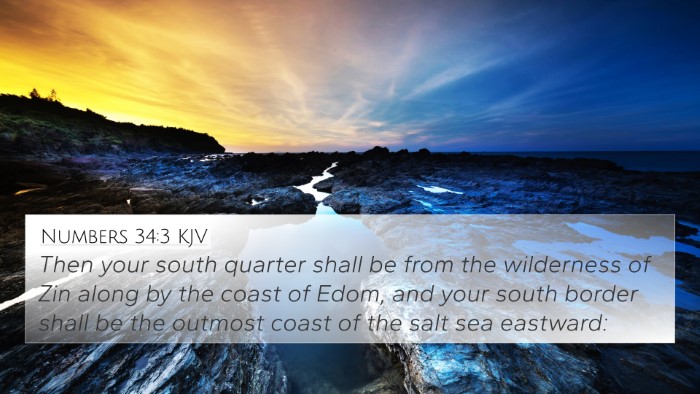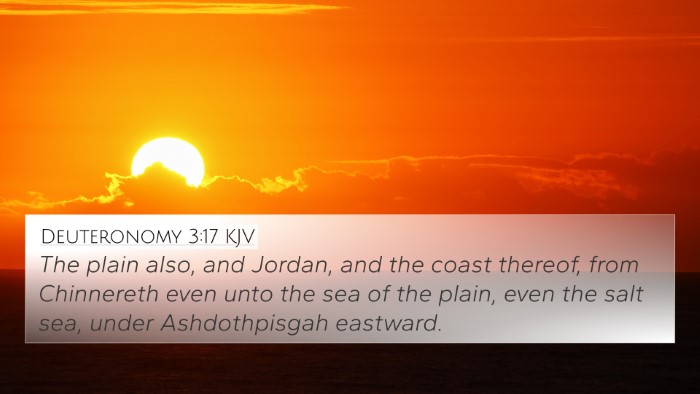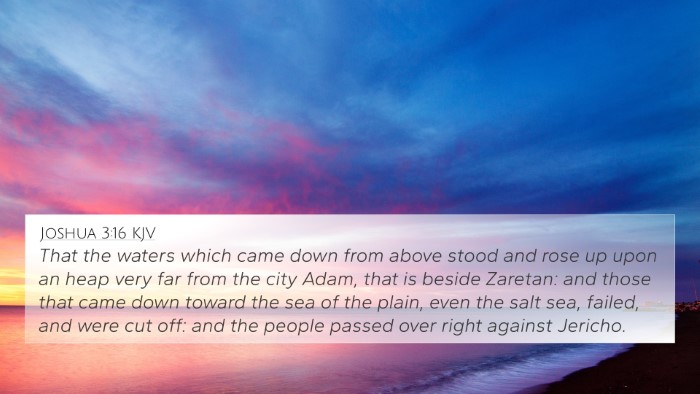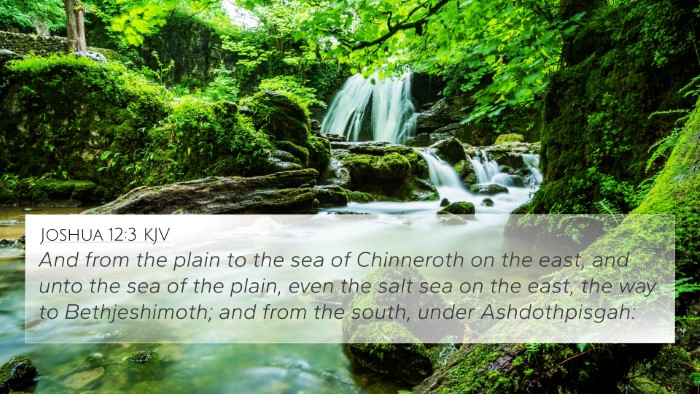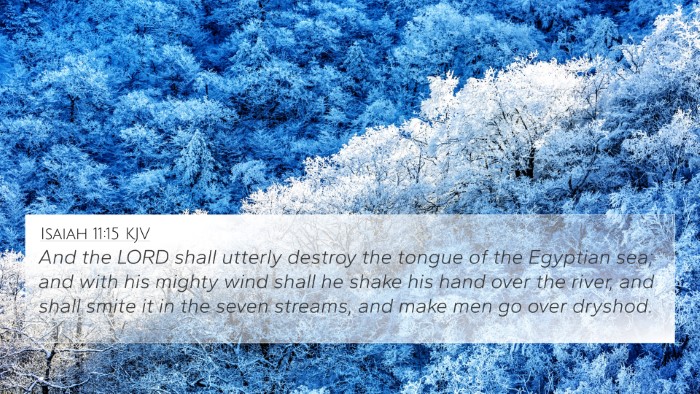Understanding Joshua 18:19
Joshua 18:19 states: “The border went out toward the north side, to Michmethah, and it went out to the east; and it went out to the south side of the Amorites.” This verse caters to the allotment of land among the tribes of Israel and provides a geographical description pertinent to the settlements.
Contextual Background
This verse falls within a larger narrative regarding the distribution of land in Canaan after the Israelites' exodus from Egypt. Known as a part of the book of Joshua, it's significant for understanding the fulfillment of God’s promise to the patriarchs regarding the land.
Thematic Analysis
The themes evident in Joshua 18:19 include:
- Divine Guidance: God's direction in the allotment of land reflects His sovereignty and the fulfillment of promises.
- Community and Identity: Each tribe's specific boundaries highlight the importance of identity and belonging among the Israelite people.
- Geographical Significance: Understanding the physical landscape aids in the comprehension of historical events in Israel's history.
Insights from Notable Commentators
Drawing from public domain commentaries:
Matthew Henry
Matthew Henry emphasizes the importance of order and clarity in the division of land. This precision ensures that each tribe understands its inheritance and responsibilities, illustrating God's desire for structure within His people.
Albert Barnes
Albert Barnes notes that the boundaries are clearly delineated, which serves to prevent disputes among the tribes. The detailed account reflects God’s intent for harmony and peace within the land He provided.
Adam Clarke
Adam Clarke comments on the significance of each landmark mentioned in the verse, explaining that these geographical markers are critical for historical accountability and future generations’ understanding of their heritage.
Cross-References to Other Biblical Texts
To deepen our understanding of Joshua 18:19, consider the following cross-references:
- Numbers 34:2-12: Provides a detailed outline of the borders of Canaan.
- Joshua 13:1-7: Discusses the remaining land to be conquered, establishing context for inheritance.
- Deuteronomy 3:12-17: Details the territories that were taken and allocated to various tribes.
- Joshua 15:1-12: Delineates the land given to the tribe of Judah, drawing parallels to Joshua 18.
- 1 Chronicles 6:54-81: Lists Levitical cities and their respective territories, showing the broader allocation among the tribes.
- Ezekiel 47:13-23: Envisions the future allocation of land among the tribes during the millennial reign, linking to promises initiated in Joshua.
- Hebrews 4:8-10: Refers to the rest that God's people will ultimately find, connecting the physical land given in Joshua to spiritual rest in Christ.
Conclusion
Daniel's breakdown of the distribution of land in the Book of Joshua provides invaluable insight into the nature of God’s promises and how they manifest in tangible ways. The examination of Joshua 18:19 exemplifies how scriptural cross-referencing enriches our understanding of the text and lays a foundation for further theological exploration.
Tools for Further Cross-Referencing
If you wish to explore further, consider utilizing:
- Bible Concordance: A reference tool to find where terms, phrases, or themes occur in Scripture.
- Bible Cross-Reference Guide: Resources that offer suggestions for similar verses and their context.
- Cross-Reference Bible Study: Methods that integrate comparative studies of related scriptures.
- Bible Reference Resources: Various tools to help identify connections and thematic links between passages.
Engaging with Scripture
As you study Joshua 18:19, ask yourself:
- What verses are related to this verse and how can I find cross-references?
- How do the connections between the Old and New Testaments deepen my understanding of God's plan?
- What similarities exist between Joshua's narrative and New Testament teachings about inheritance?
